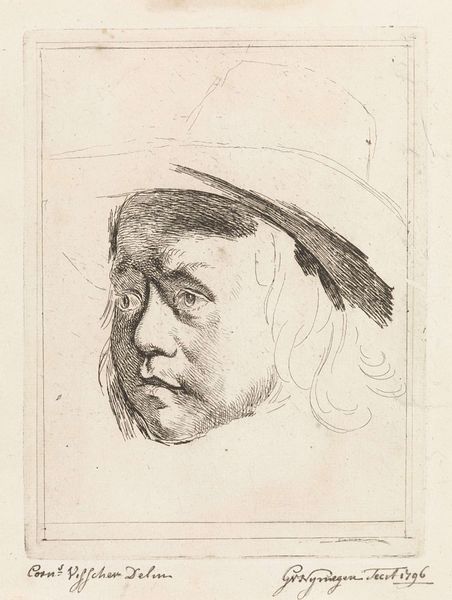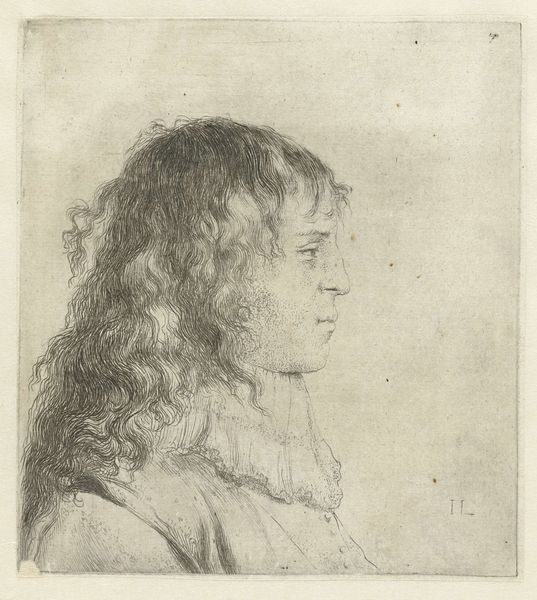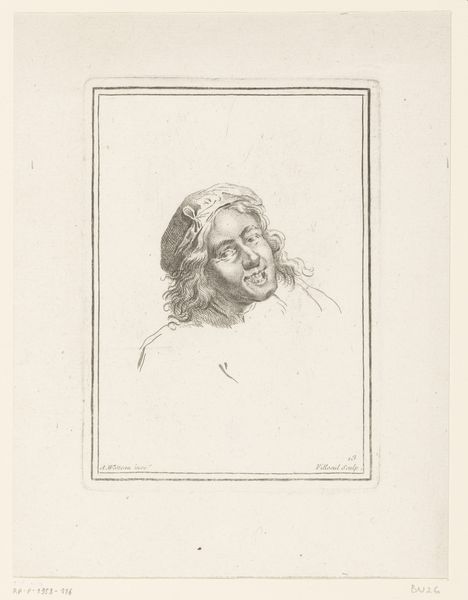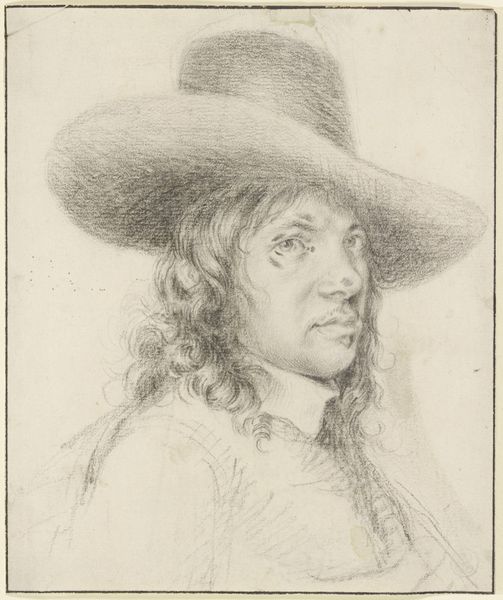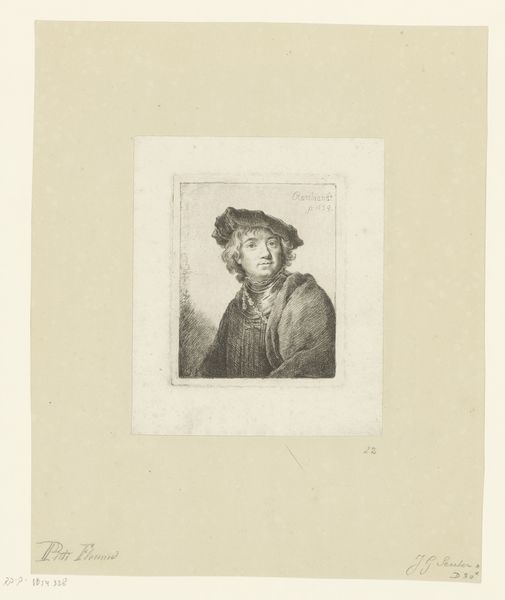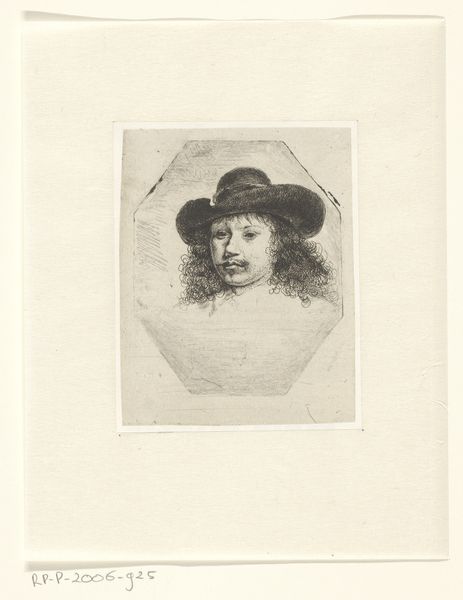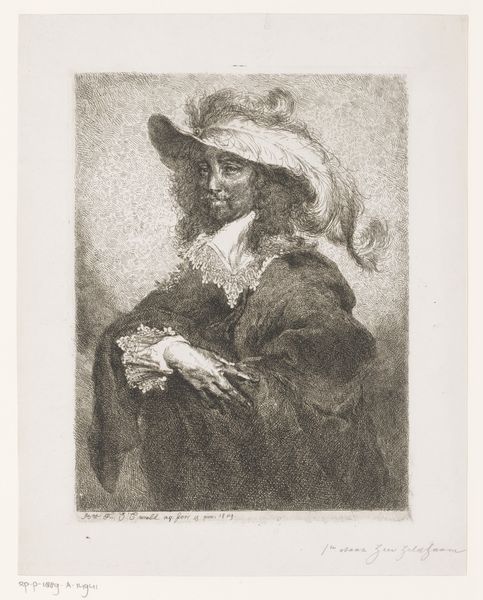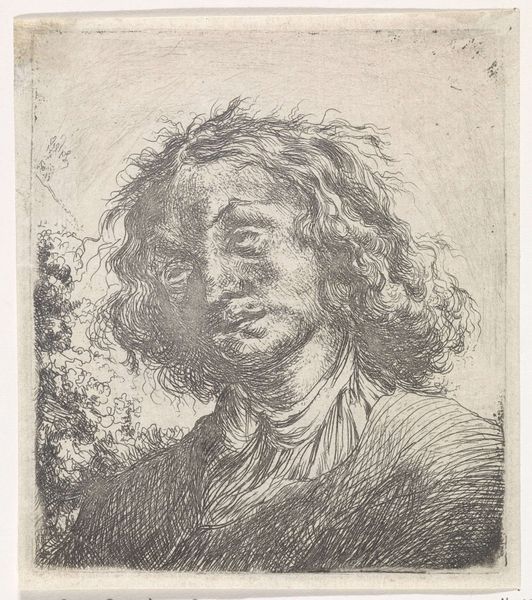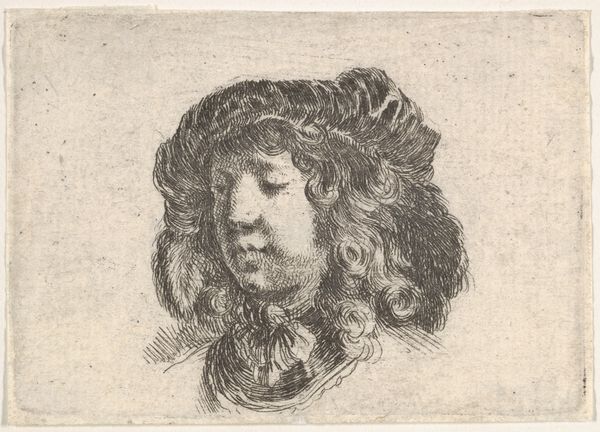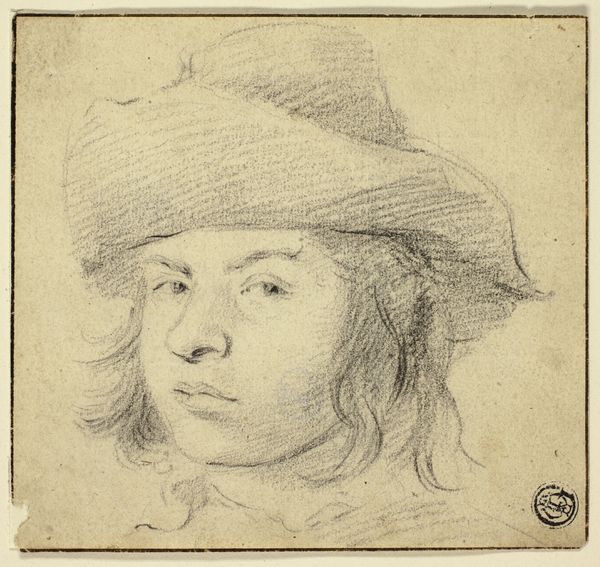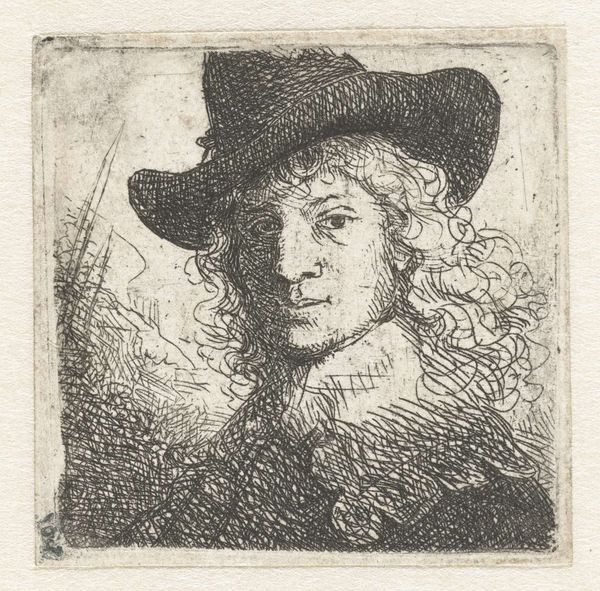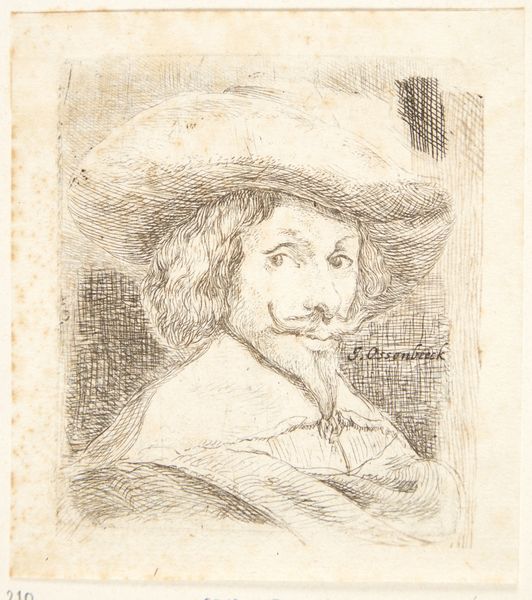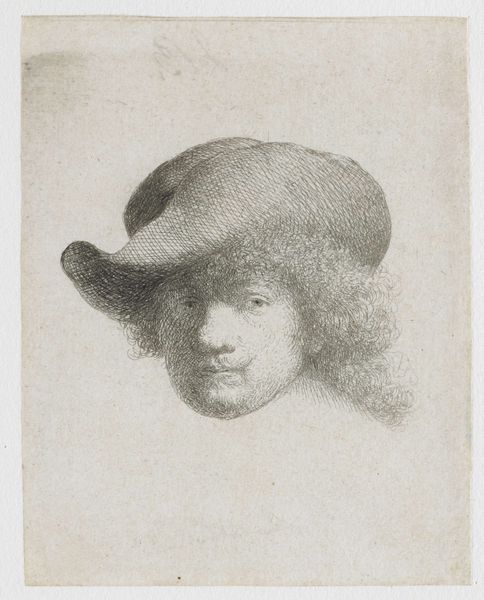
Dimensions: height 160 mm, width 123 mm
Copyright: Rijks Museum: Open Domain
Curator: The first thing that strikes me about this print is the use of line; it's remarkably varied. Look at how the engraver modulates pressure to create depth and texture. Editor: Good eye. We’re looking at Adam von Bartsch's "Portret van Moses ter Borch," likely created around 1803. It’s currently held at the Rijksmuseum. And my first thought: it's intimate. The gaze, that subtle smile—almost conspiratorial. The Baroque influence is evident, particularly in the dynamic composition and the attention to detail. Curator: Intimate yes, but think about what printmaking meant then. Reproducibility! This image of Ter Borch could be disseminated widely, entering countless homes and workshops, perhaps subtly shaping notions of Dutch identity and artistry, and certainly shaping von Bartsch’s own practice. The marketplace around these prints and the labor invested are also crucial factors here. Editor: That's true. However, even with mass production, the artistry holds. Focus on how the engraver used cross-hatching to define the contours of the face, especially around the eyes and mouth. It’s so delicately done; you almost feel you’re seeing the man's soul. Plus the chiaroscuro effect gives it an incredible sense of drama and life. Curator: And consider what that ‘soul’ represents within a burgeoning bourgeois market—what characteristics of Ter Borch, what narratives of craft are valued and distributed, by and for whom? And with what impact? Was Ter Borch, himself, part of that production process? Was it meant for popular appeal? Editor: Well, no matter its production or popularity, the formal construction leads to a rich sense of inner life, wouldn't you agree? The asymmetry, that shadow under the hat...it's not just documentation, it’s interpretation. Curator: Indeed. These material productions were part of a broader visual vocabulary, influencing tastes, values and the production of labor in early modernity. It's powerful to consider how those dynamics persist today. Editor: Absolutely, Adam von Bartsch creates more than a mere reproduction, or a visual representation. His technique allows us to feel what we look at.
Comments
No comments
Be the first to comment and join the conversation on the ultimate creative platform.

